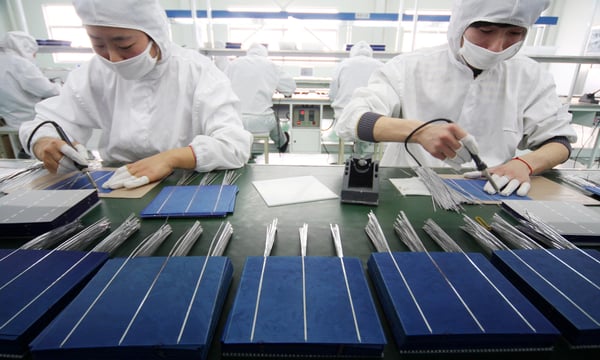When Beijing unveiled its new K visa this summer – a low-threshold, flexible residency permit designed to lure top global talent in science, engineering, and advanced manufacturing – the message seemed clear. As the United States tightens rules around H1-B work visas and slashes funding for its scientific programs, China wants to cash in on the windfall and draw some of the world’s best minds to its own factories and laboratories.
But the reaction at home was anything but celebratory. On social media, young Chinese asked why the government was opening its doors to foreign specialists when millions of domestic graduates were struggling to find work.
The debate captures a deeper contradiction in China’s current economic transition: even as youth unemployment continues to climb, the country is facing a chronic shortage of skilled technical labor.
This is China’s new productivity paradox. On the one hand, the country is racing to automate its prized manufacturing sector to sustain its global competitiveness amid rising labor costs, shrinking demographics, and geopolitical uncertainties. Last year, Chinese factories installed 300,000 industrial robots – more than the rest of the world combined and dwarfing major industrial powers like Japan, Germany, and the U.S.
Meanwhile, Beijing’s recent “AI Plus” initiative is pushing to integrate artificial intelligence into industrial production – from predictive maintenance and quality inspection to process design and logistics – with the goal of turning “smart” manufacturing into the next leap in productivity.
Yet on the other hand, China is struggling to find enough skilled workers to complement the rapid scaling of intelligent machinery, robots, and AI-powered processes. State media recently noted that “highly skilled” workers – those capable of operating and maintaining advanced equipment – make up only about 8 percent of the labor force, a share that lags far behind advanced economies.
The talent shortfall is most pronounced in advanced manufacturing. Officials estimate that China’s 10 “strategic manufacturing industries” – from next-gen information technology and high-end machinery to new materials and bio-pharmaceuticals – will collectively require 62 million skilled workers by the end of 2025. Yet roughly 48 percent of that demand is expected to go unmet.
The K visa was, to some extent, designed to plug that talent gap by bringing in foreign expertise. Yet the public backlash reveals a different kind of deficit: not only a lack of skills, but also a lack of confidence in China’s own human capital system. It also exposes how education, labor, and incentive structures have drifted apart to the detriment of China’s industrial ambitions.
China now produces well over 10 million university graduates each year and leads the world in STEM degree output. But this vast education pipeline appears poorly aligned with fast-evolving industrial demand. University courses remain heavy on theory but light on practical training in industrial software, data systems, and automation tools. Many graduates arrive at factories needing months of retraining before they can operate or optimize digital production lines. The result is a widening gap between what the classroom teaches and what the factory floor demands.
To make matters worse, companies show little enthusiasm for investing in employee training. Industry data suggest that Chinese firms spend less than half as much on training per worker as their counterparts in advanced economies like the U.S. and the U.K. Although the State Council as early as 2002 required companies to allocate at least 2.5 percent of their payroll to vocational education and staff training, compliance has been weak: only large state-owned enterprises come close, while surveys indicate that most firms spend below 0.5 percent.
Scholars at the Chinese Academy of Social Sciences – the country’s premium policy think tank – said the manufacturing sector’s notoriously high turnover rate is partly to blame: companies worry that once trained, workers will leave for higher pay elsewhere. Consequently, firms view training as a sunk cost rather than a strategic investment, thereby entrenching a culture of hire-and-replace rather than train-and-retain.
The shortage of skilled labor also has cultural roots. Many young Chinese – especially university graduates – see factory work as physically demanding, low in status, and unworthy of the professional identity they’ve built through higher education. Few are willing to trade white collar jobs for factory floors.
To narrow the gap, China must put a proper price on skill. Market economies thrive when prices convey true value, and China’s labor market has long mispriced technical expertise. As a start, training should be recognized as an investment, not an expenditure, with firms rewarded through tax credits or other incentives. Meanwhile, public funding for vocational institutions and programs should be tied to graduates’ earnings rather than enrollment numbers. Most importantly, the country needs a transparent, nationally recognized pay ladder – where every certificate brings a raise – to rebuild faith that skills can move a person up in living standard and social status.
For decades, China’s growth story has rested on a familiar equation: cheap labor plus heavy investment equals global competitiveness. That formula is increasingly outdated. With a rapidly aging population and strained fiscal resources, what matters now is not how much China invests, but how effectively it converts capital into productivity – and that will depend as much on the quality of its labor force as on sophisticated technology and machines.






